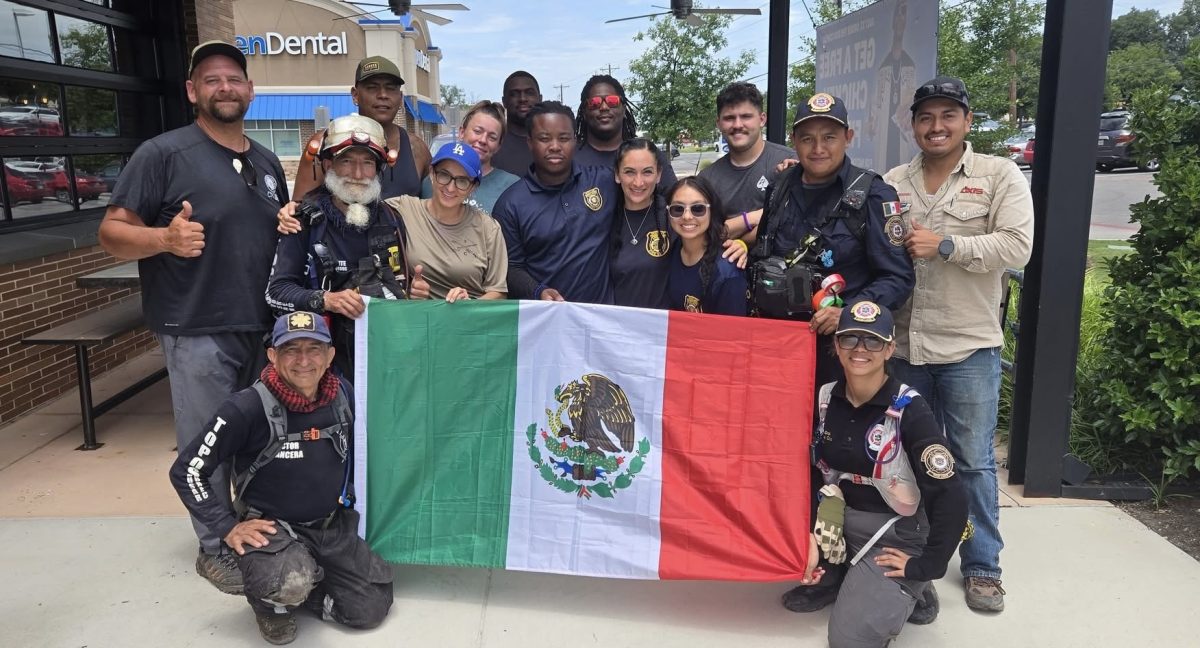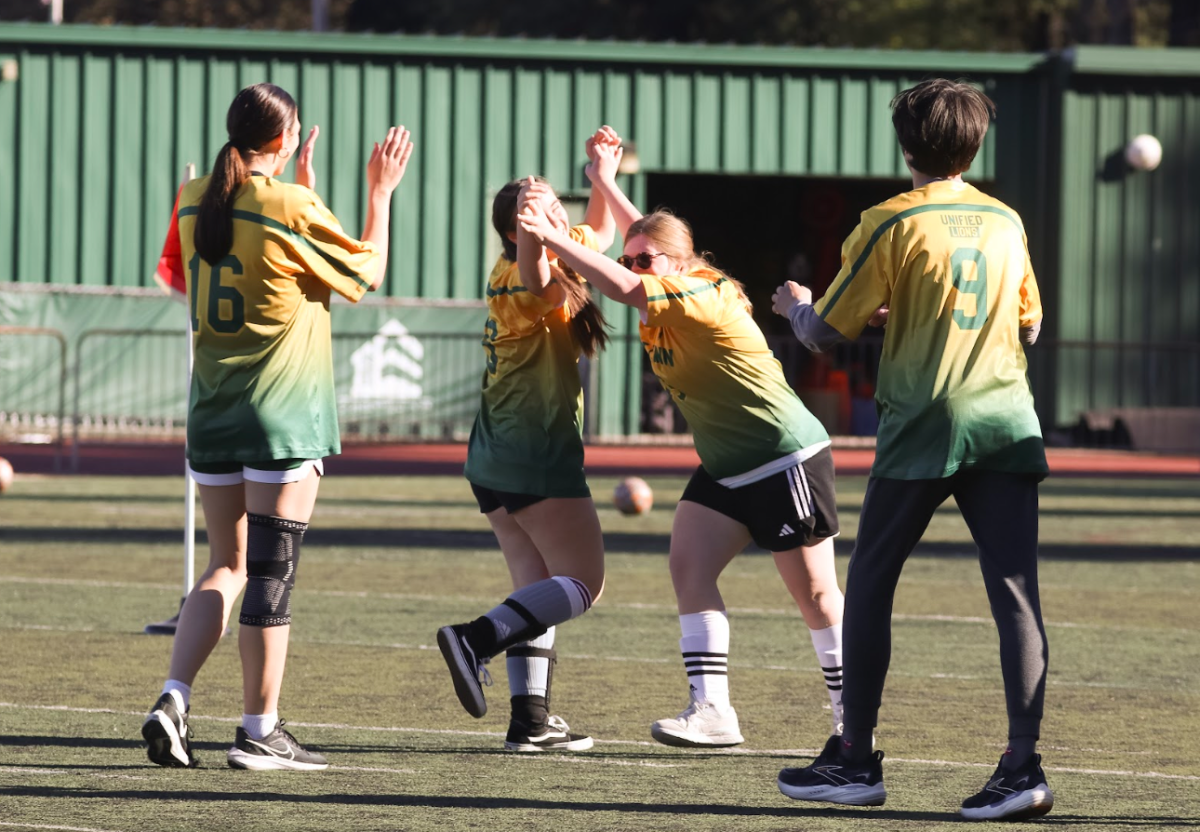This article is part four in our series, “Inside the High School Project,” which covers the controversial ACPS project the district says intends to connect students across the four ACHS campuses. However, the project has received significant pushback from students, teachers and parents. Read part one of our series here, part two here, part three here, and a bonus part, which was published in the Alexandria Times over the summer, here. Theogony will continue our coverage through at least the end of the 2024-25 school year.
On a chilly September morning, students at the King St. campus of Alexandria City High School crowded along the sidewalk in front of Door 14. There, buses were scheduled to pick them up on their way to Minnie Howard, but were nowhere to be found.
“Where are they?” one student shouted in frustration, while another muttered with exhaustion that she would miss a test in first-period. When the crowd realized that no buses were coming that morning, they began the 0.6-mile walk to the other campus.

Since its grand opening in May, the new Minnie Howard has offered exciting new facilities, including a swimming pool, teen wellness center and greenhouse. But the shiny new building comes with four times the number of students commuting between campuses, according to ACHS Lead Operations Administrator Michael Burch, as Minnie Howard now serves grades nine through 12 instead of just freshmen.
Considering how the school board approved the High School Project’s “interconnected high school network” — in which ACHS is treated as one school across multiple campuses — in 2019, students, parents and teachers have expressed frustration that transportation between campuses is not more succinct after five years of planning.
“I’m wondering why the ACPS central office didn’t prepare for this to happen,” said Matthew Henry, an English teacher at the King Street campus. “Students in focus groups six or seven years ago were discussing this very thing.”
Burch declined multiple requests for an interview, but provided a written statement saying, “The administration is engaged in collaborative efforts with all departments to ensure a smooth and effective process for intercampus transitions.”
Over the summer, Theogony asked school district officials what steps they were taking to accommodate for transportation, but was told nothing would change.
“There’s nothing different about the transport between campuses that hasn’t happened in previous years,” Chief Academic Officer Pierrette Finney said. “There may be some King Street students that have to go to Minnie Howard, but that process is the same.”
When asked by Theogony if more students would travel back and forth, Finney said “I don’t know,” but “transport between campuses will still occur as it always has,” adding “I don’t want you to make a correlation between numbers of kids that are transported and my statement about students being transported.”
District Chief of Staff Grace Taylor, who was also present at the interview, chimed in, saying, “I wouldn’t get caught up in the numbers.”
Burch confirmed in another written statement to Theogony that 35% of the student body — roughly 1,600 students — is commuting between the King Street and Minnie Howard campuses, whereas last year approximately 400 students traveled back and forth. However, he added that “the percentage of students traveling between campuses remains consistent,” because out of the roughly 1,000 students at Minnie Howard last year, 35% transported to King St.
When asked by Theogony as to how the 400% increase in total students transporting is consistent, Burch said, “data should never be used without triangulation.”*
Now, students and teachers say they are suffering from the perceived lack of planning.
“I’m always late to my class coming from Minnie Howard,” said junior Daniella McArthur, while Verveine White, another junior, nodded in agreement.
Even with 13 minutes provided for transition, making it from one campus to the other on time for class is no easy feat. Students can only leave the King St. or Minnie Howard buildings using approved doors that are opened by administrators. Then, they wait in hoards to board buses, ride to the alternate campus, file through the weapons detectors, scan their Minga digital IDs and finally navigate the hallways to reach their classrooms.

To make matters worse, ACPS is also suffering from a nationwide bus shortage.
“The buses are always late, or too early and then they leave me,” White said.
According to school administrators, approximately eight buses are required to shuttle students between the campuses each period, though many students opt to walk instead of waiting for buses, making them even later to class. Teachers say they cannot afford to wait the extra 10-15 minutes it takes for commuting students to arrive in class.
“Students who are not getting here on time because of transportation are missing a few moments of class each day,” Henry said. “That may add up over time.”
Some teachers said they have resorted to cutting out parts of their lessons to compensate for the extra transition time.
“I’ve always tried to make the most of all the minutes of the class that we have, so I’ll usually start class with a warm-up and then end class with some type of reflection,” said Trisha Christopher, a science teacher at Minnie Howard. “When we have kids coming in late, it’s hard to do that.”
In addition to causing students to miss instructional time, walking between campuses has emerged as a significant safety concern.
“Student safety is the number one concern of any school district,” said Henry. “Students shouldn’t have to walk. They shouldn’t feel that that’s an option.”
A Theogony analysis over four weeks found that several hundred students typically travel between campuses by foot, some crossing into oncoming traffic at the busy intersection of Braddock Road, King Street and Quaker Lane.

“Unfortunately, the intersection between the two high schools is the most dangerous intersection in our entire town,” Christopher said.
In a message to ACHS families, Executive Principal Alexander Duncan urged parents to “remind [their] students to use the shuttle services to travel between campuses.”
Although students are not technically allowed to walk, implementation of the policy varies. Several students told Theogony that, on some days, security personnel “yell in their face” that they will get suspended if they walk. But on other days, the students said security officers “stand there and watch” as they pass by. A high-level administrator confirmed to Theogony that “school administration is not exploring out-of-school suspensions as a consequence.”
During the second week of school, safety concerns intensified when an ACHS school bus collided with a car carrying four students driving from Minnie Howard to King Street.
Susan Jackson, the ACHS senior who was driving the car involved in the crash, recalled to Theogony what happened.

“I stopped at a red light when my neck got jolted,” Jackson said. “And then I got thrown on the dashboard of my car.
McArthur was on the other side of the crash.
“I got on the bus, and I had an AP Chem test the next period,” she said. “Suddenly I just hear the bus driver slamming on the brakes so hard.”
According to Jackson, police on the scene said the bus driver was responsible for the collision, though Theogony has not been able to independently verify this claim. Theogony has, however, confirmed that the bus driver continues to transport students between campuses.
Although no one was significantly injured in the crash, Jackson said her car sustained “notable damage,” and that she was “sad” no school administrators reached out to her after the incident.
Like many ACHS students, McArthur has a simple answer to how the transportation system can be improved.
“They need to get more buses,” she said.
Christopher, the science teacher, noted transportation issues are not unique to Alexandria’s schools.
“In a perfect world, I’d like to see more buses,” she said. “But I’ve done the research, and there’s a challenge nationwide.”
With such a large student body and the complexities of the interconnected high school network, McArthur said she has “no faith” that transportation issues will be resolved any time soon.
Henry said he believes that the real issue isn’t just a shortage of buses, but a lack of consistency overall.
“Everything changes every single year,” he said. “And that’s really frustrating for staff and students.”
*According to John Maes, a statistics teacher at King Street, “triangulating” data means to account for all variables when evaluating data. Triangulation is typically applied when comparing data at two different points in time, though Maes said “There’s nothing to really triangulate in this situation. Every year except this year, only one grade level had to transition between schools, with some outliers. This year, all four levels had to transition.”
This story was originally published on Theogony on September 27, 2024.


































